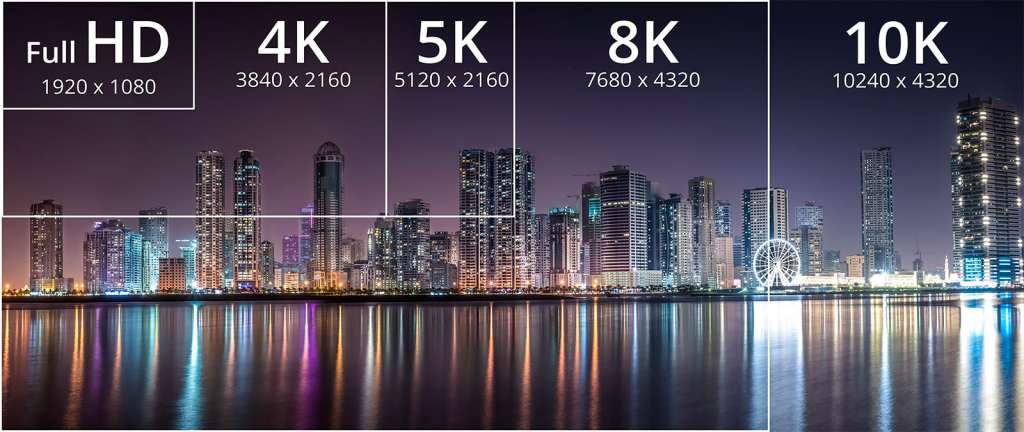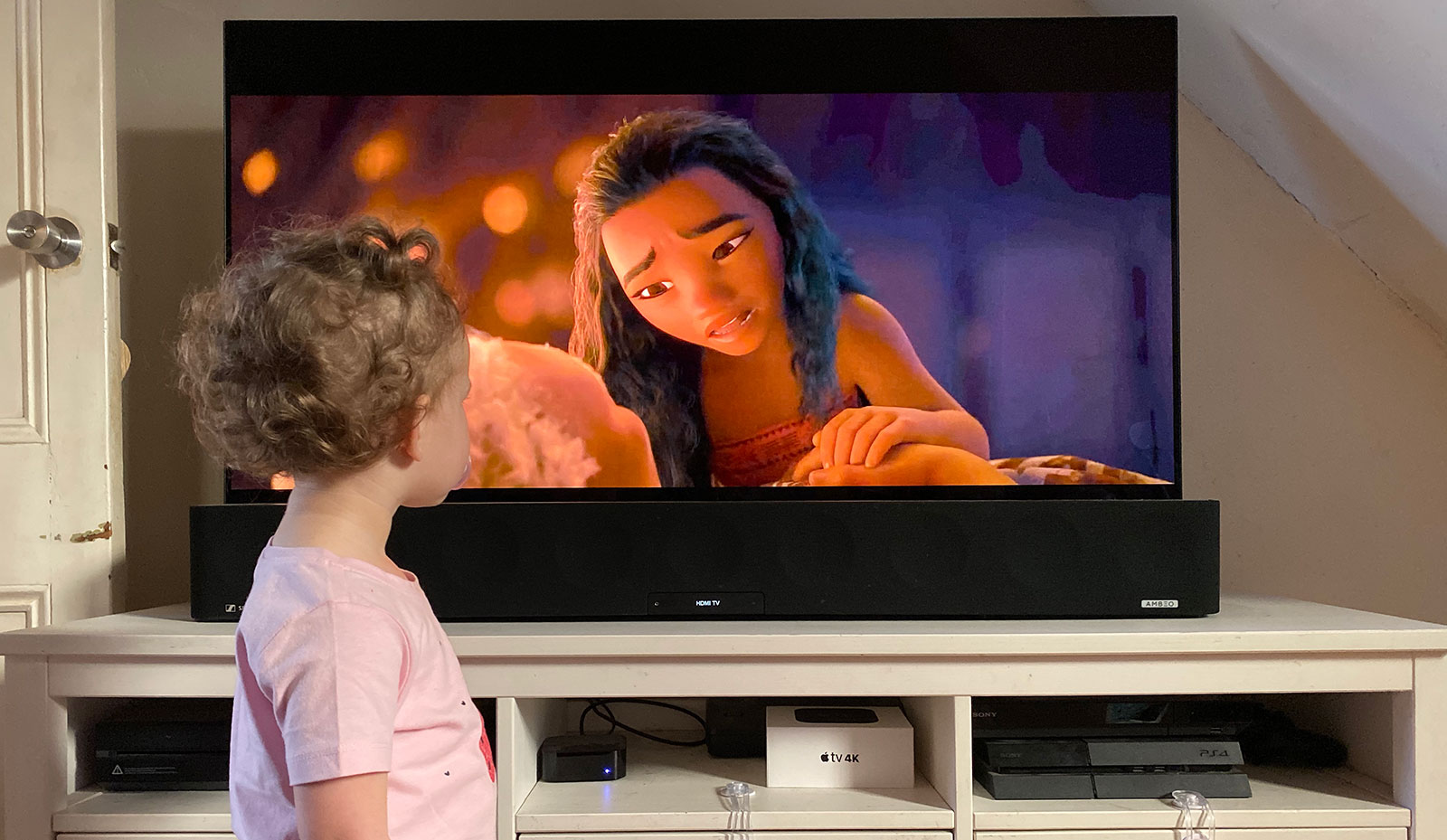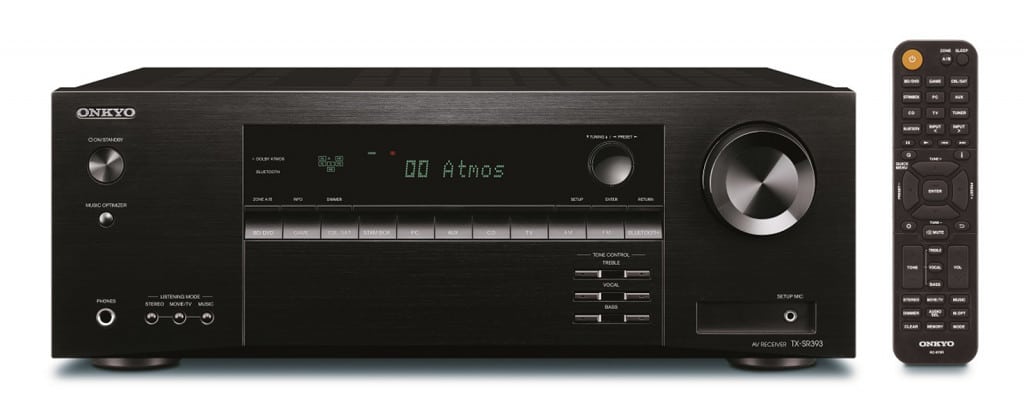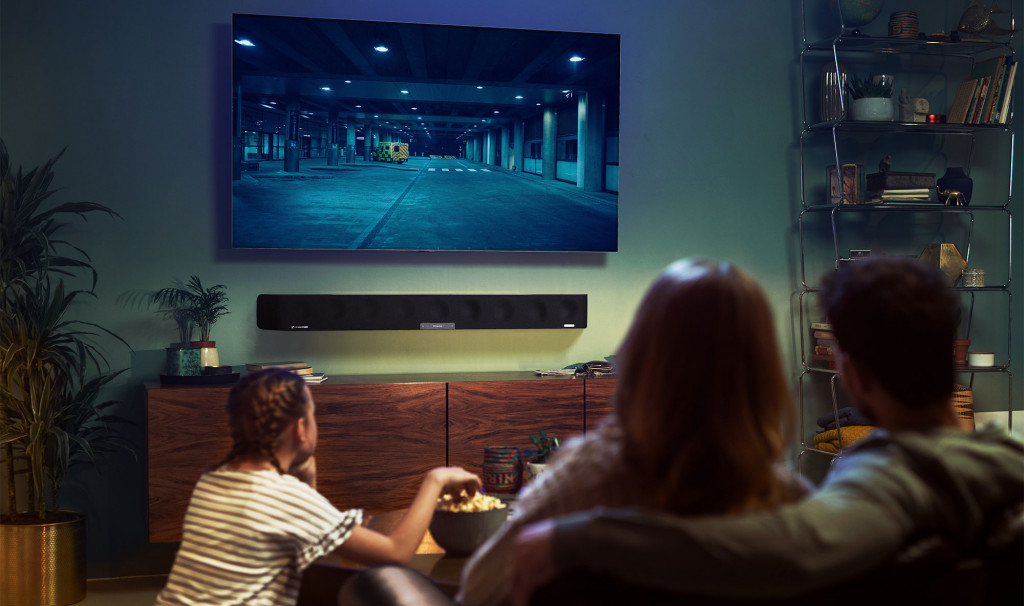There’s no such thing as “4K audio” per se, but the technology associated with sound in 4K means high-res audio and 3D surround often sound the same.
Audio doesn’t necessarily follow the same resolution rules as imagery, and we sure don’t look at sound in the same way we might a set of images being upscaled on a TV.
When you buy a 4K TV and have lower resolution Full HD 1080p video run through it, the upscaling system re-renders the images at a higher resolution, with some algorithmic processes softening while others use complex procedures to keep them as clear as could be. The technology isn’t perfect, mind you, because upscaling from something small to get to something bigger is always going to result in loss, as you are effectively stretching a pixel somewhere and trying to make up that loss by creating something again.
In audio, things are a little different. Audio doesn’t need to be upscaled the same way because surround sound from five or ten years ago is just as good today as it was back then. You don’t typically complain about the sound from an older recording, though it can be remastered for modern technology and sound even better using the technology at its disposal.
Regardless, you’ll want a decent sound system to ensure you’re getting the full breadth of sounds available to you, but the concept of a stereo sound can still be heard using two speakers or a pair of headphones, while a surround sound soundtrack can be rendered in much the same 4.1, 5.1, and 7.1 ways they could before.
Numbers mean something
Of course, those numbers mean something.
When you’re talking about speakers in a surround setup, the first number means the number of speakers and the second is the number of subwoofers. A 5.1 surround system is made up of five speakers typically arranged in centre, left and right speakers at the front, while the remaining two are the left and right which sit at the back, plus the number one which is the subwoofer for the bass.
Numbers make up most of audio, and these numbers are important.
CD quality audio is largely what we use in our home, both on the TV and for portable audio, or even if you still have a home sound setup. It’s 16-bit and delivers most of the sound you need without moving to the specialised world of 24-bit, which is typically what audio is recorded in, and keeps the full scope of what musicians and producers have captured and edited, a higher resolution sound, so to speak.
That’s why 24-bit audio is typically referred to as “high-resolution audio” or “hi-res” for short, and you can consider it an upgrade of sorts on the sound you hear, or may not. Because 16-bit is so good as it is, you may not hear the difference at all, and your sound system — headphones or speakers — may be built in such a way that you can rarely tell the difference as it is.
Things are a little different when the numbers change for newer sound systems associated with 4K TVs.

There’s no strict definition for something that is 4K sound, because sound doesn’t measure the same way. Remember that numbers are important, just as they are in 4K. In the world of 4K, that term is used because it measures the number of pixels across the content or screen: it’s 3840 pixels across in the 16:9 film aspect ratio used on most TVs, or 4096 across on some 16:10 screens. Essentially, 4K is a minimum of 3840 pixels across on a screen.
But audio doesn’t work the same way. There are no pixels to measure, so the concept of “4K sound” or “4K audio” can’t be seen the same way.
What could be 4K sound?
Simply put, there is no strict definition for what constitutes “4K sound”, but because 4K media tends to come with support for newer audio technologies, 3D sound can be referred to as 4K audio.
3D sound is a slight modification on the surround sound system you know because it adds a third number, which adds speakers that go up. In a 3D sound setup, it’s not unusual to see something like 5.1.2, which reads as the five speakers with three at the front and two at the back, one subwoofer, and then two firing up. In a 5.1.2 configuration, the two firing up are typically at the front, as that’s where sound starts.
Firing sound up in a 3D sound system might not make sense until you think about why:
In order to create the sensation of sound positioned not just around you in surround, sound designers want it to appear in bursts in space. To create that sensation, to make an explosion sound more localised or a bullet whiz by your ear, they need to position the sound in a 3D space represented as the room in which you watch movies. But unless you own a home theatre system with speakers built into the ceiling, you don’t have that capability, so instead sound designers use technology to transmit the sound with upward facing speakers to create a bubble of sound around you by bouncing it off the ceiling.
Upward facing speakers create this bubble of sound effect, and allow the sound designers to fire off these audio elements in your bubble as you sit. They’re typically timed in a way that makes the 3D soundtrack blend into the bubble of your living room, though depending on the extent of hardware, you may be able to get a better sound based on what you have available to you and the shape of your living room.
3D sound goes by other names, typically the brands it gets associated with. Dolby Atmos is the most known version, but DTS:X is another take on the technology.
What do you need to make 3D sound a reality?
Regardless of whether you call 3D sound and 4K audio the same thing, you may need something to make it work.
Some amplifiers will support it, but the speakers typically don’t, and if you’re using a soundbar with optical audio such as on a Sonos Playbar, you’ll likely need to upgrade to a future model, as Dolby Atmos and the like can’t be transmitted through optical on the current model (and it’s why we expect a new model is around the corner, among other reasons to update).
No support for 3D sound over optical audio means you’re likely turning to HDMI to get 3D sound to work, and that likely means new gear, and plugging the HDMI from your TV directly in to the HDMI of a soundbar with an Electronic Audio Return Channel or “eARC”.
Or to put it simply, if you want 3D sound in your home, you’re going to need to upgrade your sound setup. Fortunately, you have options.
Option 1: Receiver and speakers
Easily the most expensive but also the most expansive option, a home theatre receiver built for Dolby Atmos or DTS:X (or both) offers the most complex option if you want to build something that feels like it would bring the cinema home.
You’ll want a pretty penny for the whole thing, because it needs it. Expect to pay a few hundred for the amp, and then add speakers to the equation. An upside of this approach is that if you already have speakers you like, such as a centre channel, rear speakers you’re already fond of, or a decent subwoofer, you may only need to buy the new receiver with the ability to decode those Atmos and DTS:X signals, and maybe a couple of new speakers to start with that can fire up to create the 3D sound.
Remember that this option can get expensive, though it’s also the most extensive approach for someone looking to really bring the home theatre sound home.
Option 2: Soundbars
The most affordable and best case for most consumers comes in a soundbar made for 3D sound. Typically these are built for Dolby Atmos, as it’s the most common in 3D sound, but you may be able to find support for DTS:X scattered amongst the throng, too.
Soundbars with 3D audio range in price dramatically, and subsequently in feature. While many offer a set of upward speakers on the very left and right, some are clearly better than others, and others may include rear speakers that can fire up as well. That means that while some 3D soundbar packages can offer 5.1.2 for five surround speakers, one sub, and two up, you may find some that handle 5.1.4 and provide four firing up.
You may even see a smaller array at the front in a smaller soundbar design, with 3.1.2: front left, front centre, front right, subwoofer, and two upward facing speakers. This is more 3D sound without surround, but some can argue that the use of 3D sound negates the need to have total surround, and is an option for people with smaller homes and more diminutive needs.
On the other side of this argument, there are massive 3D soundbars that deliver larger amounts of speakers, and may even use a microphone to measure the room and deliver a more refined take on 3D sound, such as in the Sennheiser Ambeo 4K soundbar.
Option 3: Virtualising 3D sound
The more common take on Dolby Atmos is for virtualised 3D sound, and that’s primarily what you get in phones and TVs advertising Dolby Atmos, and even headphones that offer 3D sound.
To make sound three dimensional, you need speakers that can fire up and around. It’s why if you go for amplifiers and speakers, you’re typically buying a few that can fire up and around, while a soundbar system tends to incorporate the upward and outward facing speakers in the design.
But a couple of speakers on a TV or phone or laptop or tablet can’t do that. They can’t fire sound around you, and they can’t fire up or measure the room. Headphones sound like they can because your ears are pressed between the sound, but even then it’s not true dimensional sound.
So how to they do this?
They virtualise it by creating a 3D audio effect, changing the sound dimensionality so that various sounds appear to be positioned behind or in front of others, and by making the sound appear as if it’s dimensional.
It’s a neat effect that tends to work very well in headphones, and somewhat in speakers, though not quite as solid as the real thing.
What about movies with 3D sound?
Unlike the absolute dearth of 8K content, there’s a fair amount of content with 3D sound already applied, as it has been used in movies for a number of years now.
Finding it isn’t hard, and it’s one more reason why 3D sound is associated with the idea of “4K sound”: it’s typically the soundtrack on a 4K movie.
Glance at an Apple TV 4K or an Ultra HD Blu-ray title (BD4K), and you’ll invariably find a soundtrack made for those 4K sound systems. Movies delivered in 4K typically arrive with a standard surround soundtrack, but they’ll also usually come with one for Dolby Atmos, too. Just look for the Dolby Atmos or DTS:X label on the back, and you’ll get what we mean.
Systems can also simulate the 3D sound effect if a compatible soundtrack hasn’t been applied, and this will use technology not unlike the virtualised 3D sound effect approach to position audio so that it sounds more three dimensional, yet leverage an actual 3D sound system to make it happen. In this approach, the hardware is making the audio match the needs of the 3D system, and not the other way around.
New hardware is the answer
If you’re eyeing the idea of 3D sound, you need to know that it’s an upgrade that will likely mean new hardware regardless.
If you have the speakers, you may need the amplifier or receiver. If you don’t and you want something simple, it’s a new soundbar. If you’re like us and you have a Sonos, and you want to stay in the Sonos system, it’s a matter of waiting until Sonos releases a soundbar that can handle 3D audio, which likely means new speakers in the soundbar and support for the eARC HDMI port, though there are reports that a standard HDMI ARC port can do Atmos, too.
Getting to that point is typically a matter of saving up and working out which speaker speaks to you most of all, though once you do, the soundtracks are ready and waiting to blast your eardrums into movie bliss.










